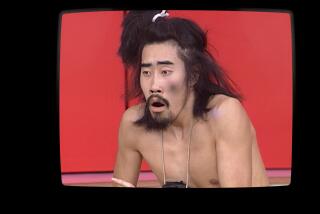Challenger Disaster Postponed Journey : Japan’s Astronauts Play Waiting Game
TOKYO — Since Chiaki Naito traded in her scalpel for a spacesuit a year ago, she and two male colleagues have found nothing but a long wait for a ride into space.
Chosen from 550 finalists, the 34-year-old cardiologist drew national attention last year when authorities announced that she, Mamoru Mori and Takao Doi would be the first Japanese astronauts to blast into space aboard an American space shuttle.
But because of the Challenger disaster in January, the three are facing a long wait--probably several years--for the National Aeronautics and Space Administration to put their names on a flight roster.
Japan’s own space program is at least 20 years away from manned flights.
The Japanese program’s budget this year was a relatively paltry $691 million, while the United States spent about 10 times that amount on its NASA operations alone.
Before the Challenger tragedy, the Japanese team was to make its maiden voyage in early 1988.
Now there is no telling when they will get off the ground, since U.S. military-related missions will get first priority when NASA resumes shuttle flights in 1988.
The long hiatus doesn’t bother Naito, who has since become a virtual Japanese heroine.
Since being tapped to be the first Japanese woman in space, Naito finds herself dodging autograph hounds and fielding a torrent of requests for personal appearances and invitations to important social events, such as Emperor Hirohito’s annual garden party.
“People call and ask for a lecture by Naito-san, and a lot of times she can’t fit things into her schedule,” said Michiko Ikeda, a National Space Development Agency public relations officer. “If I suggest one of the two male astronauts, they usually say, ‘Forget it.’ ”
Naito, who was raised in a rural area northwest of Tokyo, left home at age 13 to board with family friends while attending school in the Japanese capital. She studied at aristocratic Keio Girls’ High School and won admission to Keio University Medical School, considered the best in Japan.
“I wanted to be a doctor since I was in kindergarten,” Naito said. Her resolve was strengthened when her younger brother became crippled by a muscle disorder. He since has been cured.
For seven years, Naito performed open-heart surgery at Tokyo’s Keio University Hospital.
“Sometimes I miss the old days of being just a medical doctor,” she said.
Still, she sees her new job as compatible with her previous experience.
“You know, about 10% of the NASA astronauts are medical doctors like me,” she said.
Mori, a 38-year-old graduate of Australia’s Flinders University, is a specialist in vacuum engineering. Doi, 31, is an expert in rocket engines.
When they finally get the NASA go-ahead, Naito and company will conduct a mission called the First Materials Processing Tests, in which they will perform 34 experiments during a weeklong shuttle flight.
One of the more unusual experiments will be to monitor the behavior of two Japanese carp to see how they adjust to weightlessness, Naito said.
The crew will also manufacture a computer chip in zero gravity, hoping that a superior product can be created outside of the Earth’s pull. “We believe we can create larger crystals than we can under Earth conditions,” Naito said.
Naito, Mori and Doi, who all bear the title of “payload specialist,” were chosen under a rigorous set of criteria, including psychological characteristics such as cooperativeness and emotional stability.
The program’s physical health criteria are no less demanding.
More to Read
Sign up for Essential California
The most important California stories and recommendations in your inbox every morning.
You may occasionally receive promotional content from the Los Angeles Times.










